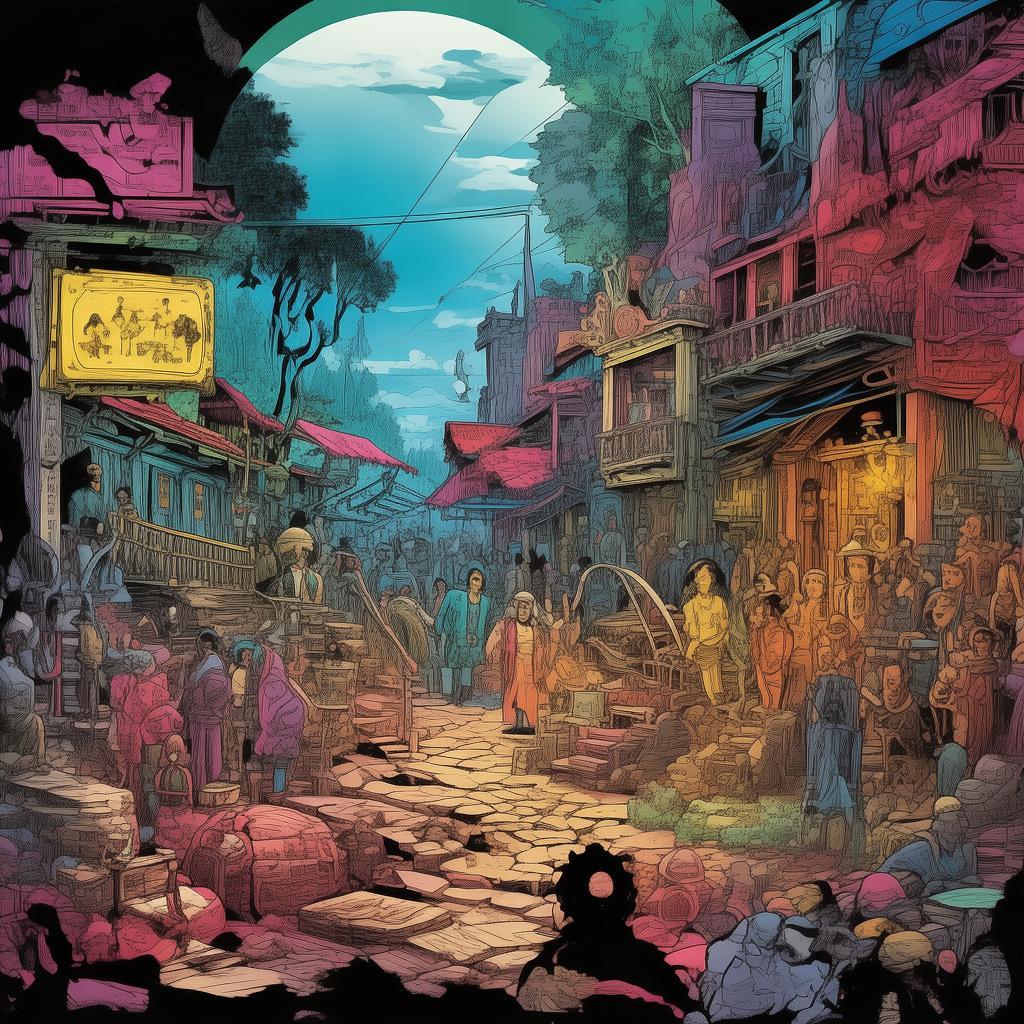The Looming Symphony: A Love Story in the Age of Iron and Steam
In the heart of the industrial town of Manchester, where the air was thick with the scent of coal and the ground trembled with the clatter of machinery, there lived a boy named Thomas. Thomas was not just any boy; he was a weaver, a craft that had been passed down through generations of his family. His hands, calloused and scarred, were the mark of a life spent in the relentless toil of his trade.
The loom was his companion, his enemy, and sometimes, his solace. It was with this loom that Thomas wove the fabric of his life, creating patterns of thread that, to the untrained eye, were but simple designs. Yet, to Thomas, these threads held the essence of his soul, the dreams that danced in his mind and the hopes that fluttered in his heart.
One spring morning, as the world outside began to awaken from the winter's dormancy, Thomas met her. Her name was Clara, and she worked as a seamstress in the same factory, her fingers deftly manipulating fabric and thread. From the moment their eyes met, there was an unspoken understanding that something profound was about to unfold.
Their love was like a whisper in the crowded streets of Manchester, a delicate dance between the two of them that was forbidden by the very society they lived in. For Thomas was the son of a union leader, and Clara, the daughter of a factory owner. Their worlds were as incompatible as the steam that rose from the factory chimneys and the rain that fell upon the cobblestone streets.

Yet, their hearts were one, and in the hidden corners of the factory, where the machines were silent and the workers were few, they found solace in each other's arms. The loom was the canvas upon which they painted their love, the threads of their passion interwoven with the fabric of their lives.
But the industrial revolution was not a force to be trifled with. It was a relentless beast that sought to consume everything in its path, including the love of two young souls caught in its maw. Thomas's father, a man who fought for the rights of the workers, had been betrayed by one of his closest allies, a man who had sold him out to the factory owners for personal gain.
The betrayal was not only a political one but a personal one as well, for the man who sold Thomas's father out was none other than Clara's father. The revelation of this betrayal shattered Thomas's world, leaving him to grapple with the harsh reality that the very love he cherished was entwined with the threads of deceit and greed.
Clara, torn between her loyalty to her father and her love for Thomas, found herself in a moral quandary. She knew that her father was a man of means and influence, a man who could change the lives of the workers, and perhaps even Thomas's, for the better. But her heart belonged to Thomas, and the thought of him being a pawn in her father's grand scheme was too much to bear.
The conflict between Thomas and Clara grew, not only due to the political divide between their families but also because of the growing tension within themselves. Thomas, fueled by anger and betrayal, sought to prove his worth not just as a lover but as a man who could stand against the machine that sought to crush the workers.
In a climactic moment, Thomas found himself at the helm of a protest, his voice rising above the din of the factory, his words a call to arms for the workers who were being exploited by the factory owners. Clara, witnessing her father's actions from the crowd, was forced to confront her own beliefs and the choices she had made.
The climax of their story was not one of grand gestures or declarations of love but of action. Thomas, fueled by love and the fight for justice, was instrumental in organizing a strike that would shake the very foundations of the factory system. Clara, inspired by Thomas's courage, stood by his side, her loom now a symbol of the workers' fight for dignity and rights.
The ending was not one of finality but of hope. Thomas and Clara's love, though tested by the iron and steam of the industrial age, remained unbroken. Together, they continued to fight for a future where love and justice could coexist with the relentless march of progress.
In the years that followed, the loom that had once been a symbol of Thomas's passion became a tool for change, the fabric of their love a testament to the strength of the human spirit. And in the heart of Manchester, where the industrial revolution was in full bloom, the love story of Thomas and Clara would be remembered as a whisper in the wind, a melody that would resonate through the ages.
✨ Original Statement ✨
All articles published on this website (including but not limited to text, images, videos, and other content) are original or authorized for reposting and are protected by relevant laws. Without the explicit written permission of this website, no individual or organization may copy, modify, repost, or use the content for commercial purposes.
If you need to quote or cooperate, please contact this site for authorization. We reserve the right to pursue legal responsibility for any unauthorized use.
Hereby declared.









